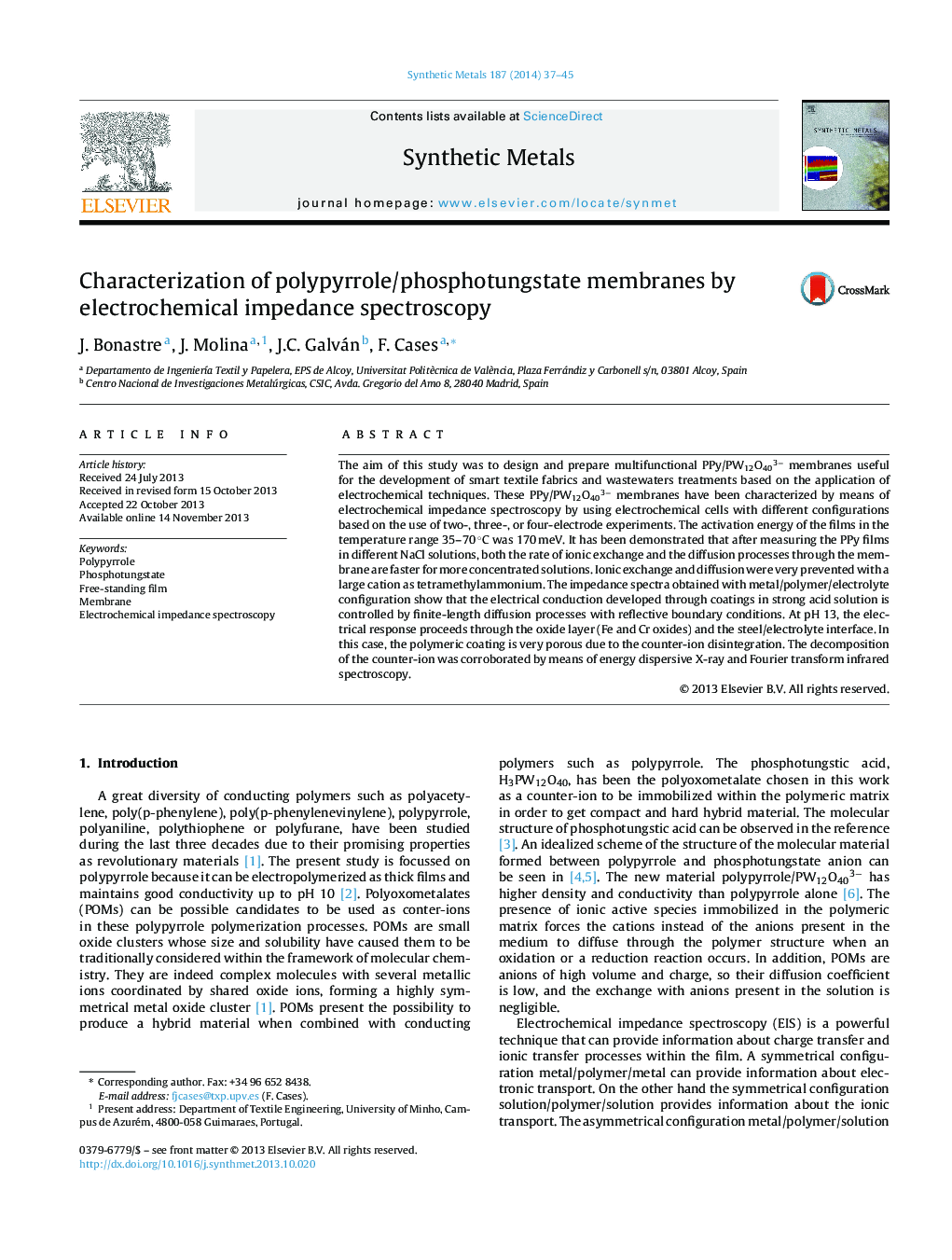| Article ID | Journal | Published Year | Pages | File Type |
|---|---|---|---|---|
| 1441124 | Synthetic Metals | 2014 | 9 Pages |
•Membranes for smart textile fabrics and wastewaters treatments have been achieved.•Membranes with different electric pathways via pH modulation have been prepared.•Membranes were characterized by using two-, three-, or four-electrode experiments.•Membranes present semiconducting nature. The activation energy was 170 meV.
The aim of this study was to design and prepare multifunctional PPy/PW12O403− membranes useful for the development of smart textile fabrics and wastewaters treatments based on the application of electrochemical techniques. These PPy/PW12O403− membranes have been characterized by means of electrochemical impedance spectroscopy by using electrochemical cells with different configurations based on the use of two-, three-, or four-electrode experiments. The activation energy of the films in the temperature range 35–70 °C was 170 meV. It has been demonstrated that after measuring the PPy films in different NaCl solutions, both the rate of ionic exchange and the diffusion processes through the membrane are faster for more concentrated solutions. Ionic exchange and diffusion were very prevented with a large cation as tetramethylammonium. The impedance spectra obtained with metal/polymer/electrolyte configuration show that the electrical conduction developed through coatings in strong acid solution is controlled by finite-length diffusion processes with reflective boundary conditions. At pH 13, the electrical response proceeds through the oxide layer (Fe and Cr oxides) and the steel/electrolyte interface. In this case, the polymeric coating is very porous due to the counter-ion disintegration. The decomposition of the counter-ion was corroborated by means of energy dispersive X-ray and Fourier transform infrared spectroscopy.
